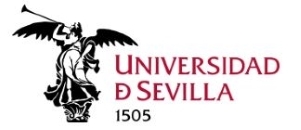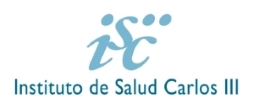Cód. SSPA: IBiS-B-05
Investigador Responsable (IR): Alberto Pascual
IPs de Proyectos:
Alberto Pascual:
Investigamos el papel de las células no neuronales en la fisiología y patología del cerebro. Nuestros estudios recientes se centran en la actividad de la microglía y las células endoteliales, habiendo descrito el papel relevante de las vías de señalización de hipoxia y de la angiogénesis en la patología de la enfermedad de Alzheimer. En particular hemos descrito un nuevo mecanismo por el que los vasos sanguíneos se ven alterados durante el curso de la enfermedad, lo que provoca estrés por hipoxia y nutrientes en las células de la microglía. La descripción de las cicatrices vasculares –VaS– suponen un nuevo hallazgo histopatológico en modelos de enfermedad y abren una nueva hipótesis vascular que podría contribuir a la progresión de la enfermedad, la angiogénesis no productiva.
Líneas de Investigación:
1. Role of carbohydrate metabolism and mitochondria in microglia during health and disease1–3.
2. Non-productive angiogenesis in AD4.
Publicaciones seleccionadas:
1. Mora-Romero, B., Capelo-Carrasco, N., Pérez-Moreno, J.J., Alvarez-Vergara, M.I., Trujillo-Estrada, L., Romero-Molina, C., Martinez-Marquez, E., Morano-Catalan, N., Vizuete, M., Lopez-Barneo, J., et al. (2024). Microglia mitochondrial complex I deficiency during development induces glial dysfunction and early lethality. Nat Metab 6, 1479–1491. https://doi.org/10.1038/s42255-024-01081-0.
2. March-Diaz, R., Lara-Ureña, N., Romero-Molina, C., Heras-Garvin, A., Ortega-de San Luis, C., Alvarez-Vergara, M.I., Sanchez-Garcia, M.A., Sanchez-Mejias, E., Davila, J.C., Rosales-Nieves, A.E., et al. (2021). Hypoxia compromises the mitochondrial metabolism of Alzheimer’s disease microglia via HIF1. Nat Aging 1, 385–399. https://doi.org/10.1038/s43587-021-00054-2.
3. Sanchez-Garcia, M.A., Lara-Urena, N., March-Diaz, R., Ortega-de San Luis, C., Quiñones-Cañete, S., Cabello-Rivera, D., Muñoz-Cabello, A.M., Mora-Romero, B., Romero-Molina, C., Heras-Garvin, A., et al. The PHD3-FOXO3 axis modulates the interferon type I response in Alzheimer’s disease microglia. bioRxiv.
4. Alvarez-Vergara, M.I., Rosales-Nieves, A.E., March-Diaz, R., Rodriguez-Perinan, G., Lara-Ureña, N., Ortega-de San Luis, C., Sanchez-Garcia, M.A., Martin-Bornez, M., Gómez-Gálvez, P., Vicente-Munuera, P., et al. (2021). Non-productive angiogenesis disassembles Aß plaque-associated blood vessels. Nat Commun 12, 3098. https://doi.org/10.1038/s41467-021-23337-z.
David Macías:
En el grupo de investigación SENOXIA estudiamos cómo las células y los organismos se adaptan y responden a la falta de oxígeno (hipoxia) tanto en situaciones fisiológicas como patológicas.
Nuestros estudios recientes han demostrado un papel fundamental de la vía de señalización de hipoxia en el desarrollo y función del cuerpo carotídeo (un quimiorreceptor periférico que dispara reflejos respiratorios en respuesta a hipoxia aguda) y del sistema simpatoadrenal. En la actualidad, estamos investigando los mecanismos que regulan la vascularización del cuerpo carotídeo y su implicación en las respuestas sistémicas a la hipoxia. Además, hemos descrito que un inhibidor de HIF-2alpha (aprobado para su uso en la clínica) ofrece protección e incluso reviente la hipertensión pulmonar en modelos animales.
Recientemente, hemos iniciado una línea de investigación para estudiar la implicación de la vía de señalización de hipoxia sobre las células senescentes que se acumulan en enfermedades asociadas al envejecimiento, con especial interés en cáncer (pulmón y páncreas) y fibrosis pulmonar.
Finalmente, y en colaboración con el laboratorio del Dr Alberto Pascual, estamos interesados en la relación que existe entre metabolismo de los carbohidratos y la función de la microglía tanto en condiciones basales como en modelos de demencia frontotemporal.
Líneas de investigación:
- Papel de VEGF en la vascularización del cuerpo carotídeo.
- Regulación del secretoma senescente por hipoxia en enfermedades asociadas al envejecimiento.
- Metabolismo y función de la microglia.
- Vía de señalización de hipoxia y función del sistema nervioso autónomo.
Diego García-González:
Neurogénesis y Trastornos del Neurodesarrollo
Nuestro laboratorio se dedica a una de las preguntas más fundamentales y fascinantes del neurodesarrollo: cómo la neurogénesis genera la vasta diversidad celular del sistema nervioso central. Investigamos los mecanismos moleculares y celulares que subyacen a la proliferación, diferenciación, migración y maduración de las células madre neuronales, procesos clave que configuran la arquitectura y la función cerebral.
Nos interesa especialmente comprender cómo las sutiles desviaciones en estos procesos, que se producen durante periodos críticos del desarrollo, pueden provocar alteraciones duraderas en los circuitos neuronales. Estas alteraciones se asocian cada vez más a trastornos psiquiátricos como el autismo, la esquizofrenia y la epilepsia. Mediante el uso de neuroanatomía comparada, transcriptómica unicelular, optogenética y técnicas avanzadas de imagen, nuestro objetivo es descubrir cómo se configuran los circuitos neuronales tanto en la salud como en la enfermedad.
Con sede en el Instituto de Biomedicina de Sevilla (IBiS) – CSIC, colaboramos activamente con investigadores internacionales de primer nivel. Nuestro objetivo final es descifrar la lógica celular del desarrollo cerebral, aportando información que podría allanar el camino para nuevas estrategias terapéuticas para trastornos psiquiátricos y del neurodesarrollo. Mediante enfoques experimentales de vanguardia y colaboraciones interdisciplinarias, trabajamos para desentrañar la complejidad del cerebro.
Diego García-González (e-mail: dgg@csic.es)
Publicaciones seleccionadas:
2022 Batiuk M et al. Upper cortical layer-driven network impairment in schizophrenia. Sci Advances. DOI: 10.1126/sciadv.abn8367.
2021 García-González D et al. Neurogenesis of medium spiny neurons in the nucleus accumbens continues into adulthood and is enhanced by pathological pain. Mol Psychiatry. DOI: 10.1038/s41380-020-0823-4.
2020 Vasistha N et al. Maternal inflammation has a profound effect on cortical interneuron development in a stage and subtype-specific manner. Mol Psychiatry. DOI: 10.1038/s41380-019-0539-5.
2019 Matsumoto M et al. Dynamic changes in ultrastructure of the primary cilium in migrating neuroblasts in the postnatal brain. J Neurosci. DOI: 10.1523/JNEUROSCI.1503-19.2019.
2017 García-González D et al. Serotonergic projections govern postnatal neuroblast migration. Neuron. DOI: 10.1016/j.neuron.2017.04.013.















